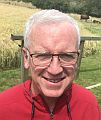MOVING TOWARDS SUSTAINABLE SERVICE DELIVERY IN THE COMOX VALLEY: “Asset Management for Sustainable Service Delivery is much more than setting some money aside for infrastructure replacement. It must be a comprehensive and integrated approach that links the past, present and future,” stated Geoff Garbutt, City of Manager, City of Courtenay

“In my mind, the phrase Asset Management for Sustainable Service Delivery is a euphemism for make the right decisions, think about the future, and then take action. It has got to evolve because the future is NOT the past. We also need to adapt moving forward. So, that means Asset Management for Sustainable Service Delivery has got to reflect where the community is going as well. If you are only going to make decisions that maintain your assets as they are, that is insufficient. The process needs to evolve to meet the community’s changing needs,” stated Geoff Garbutt.










